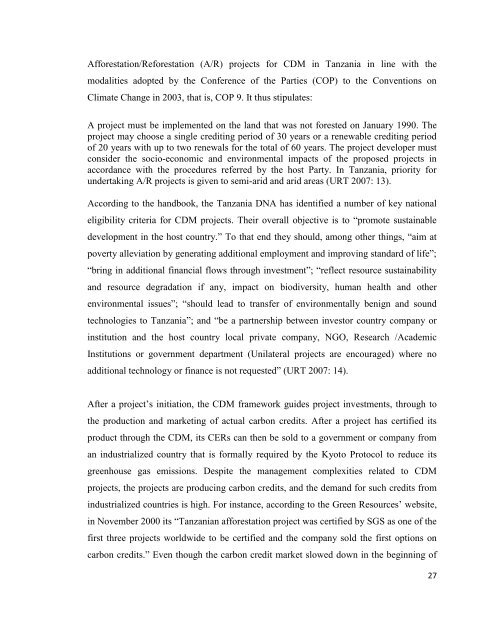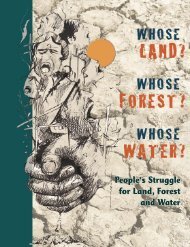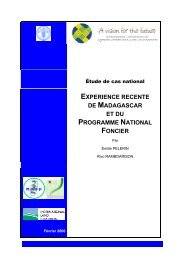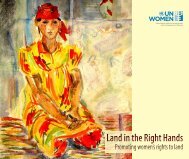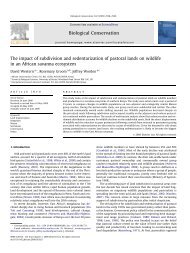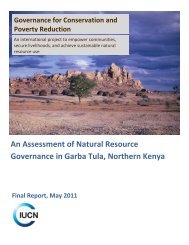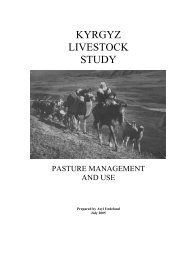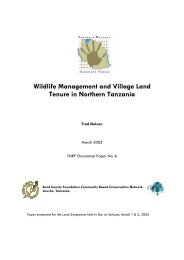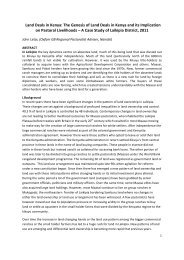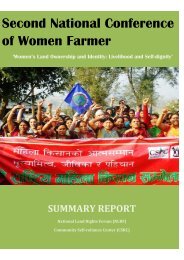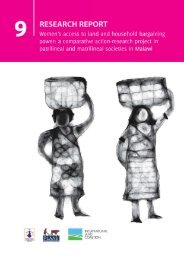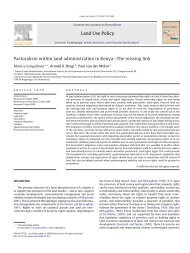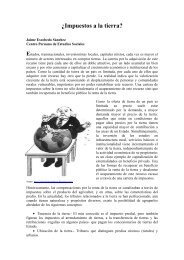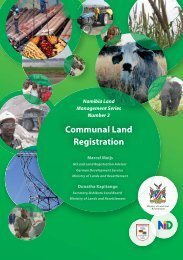accumulation by land dispossession and labor ... - Land Portal
accumulation by land dispossession and labor ... - Land Portal
accumulation by land dispossession and labor ... - Land Portal
Create successful ePaper yourself
Turn your PDF publications into a flip-book with our unique Google optimized e-Paper software.
Afforestation/Reforestation (A/R) projects for CDM in Tanzania in line with the<br />
modalities adopted <strong>by</strong> the Conference of the Parties (COP) to the Conventions on<br />
Climate Change in 2003, that is, COP 9. It thus stipulates:<br />
A project must be implemented on the <strong>l<strong>and</strong></strong> that was not forested on January 1990. The<br />
project may choose a single crediting period of 30 years or a renewable crediting period<br />
of 20 years with up to two renewals for the total of 60 years. The project developer must<br />
consider the socio-economic <strong>and</strong> environmental impacts of the proposed projects in<br />
accordance with the procedures referred <strong>by</strong> the host Party. In Tanzania, priority for<br />
undertaking A/R projects is given to semi-arid <strong>and</strong> arid areas (URT 2007: 13).<br />
According to the h<strong>and</strong>book, the Tanzania DNA has identified a number of key national<br />
eligibility criteria for CDM projects. Their overall objective is to ―promote sustainable<br />
development in the host country.‖ To that end they should, among other things, ―aim at<br />
poverty alleviation <strong>by</strong> generating additional employment <strong>and</strong> improving st<strong>and</strong>ard of life‖;<br />
―bring in additional financial flows through investment‖; ―reflect resource sustainability<br />
<strong>and</strong> resource degradation if any, impact on biodiversity, human health <strong>and</strong> other<br />
environmental issues‖; ―should lead to transfer of environmentally benign <strong>and</strong> sound<br />
technologies to Tanzania‖; <strong>and</strong> ―be a partnership between investor country company or<br />
institution <strong>and</strong> the host country local private company, NGO, Research /Academic<br />
Institutions or government department (Unilateral projects are encouraged) where no<br />
additional technology or finance is not requested‖ (URT 2007: 14).<br />
After a project‘s initiation, the CDM framework guides project investments, through to<br />
the production <strong>and</strong> marketing of actual carbon credits. After a project has certified its<br />
product through the CDM, its CERs can then be sold to a government or company from<br />
an industrialized country that is formally required <strong>by</strong> the Kyoto Protocol to reduce its<br />
greenhouse gas emissions. Despite the management complexities related to CDM<br />
projects, the projects are producing carbon credits, <strong>and</strong> the dem<strong>and</strong> for such credits from<br />
industrialized countries is high. For instance, according to the Green Resources‘ website,<br />
in November 2000 its ―Tanzanian afforestation project was certified <strong>by</strong> SGS as one of the<br />
first three projects worldwide to be certified <strong>and</strong> the company sold the first options on<br />
carbon credits.‖ Even though the carbon credit market slowed down in the beginning of<br />
27


